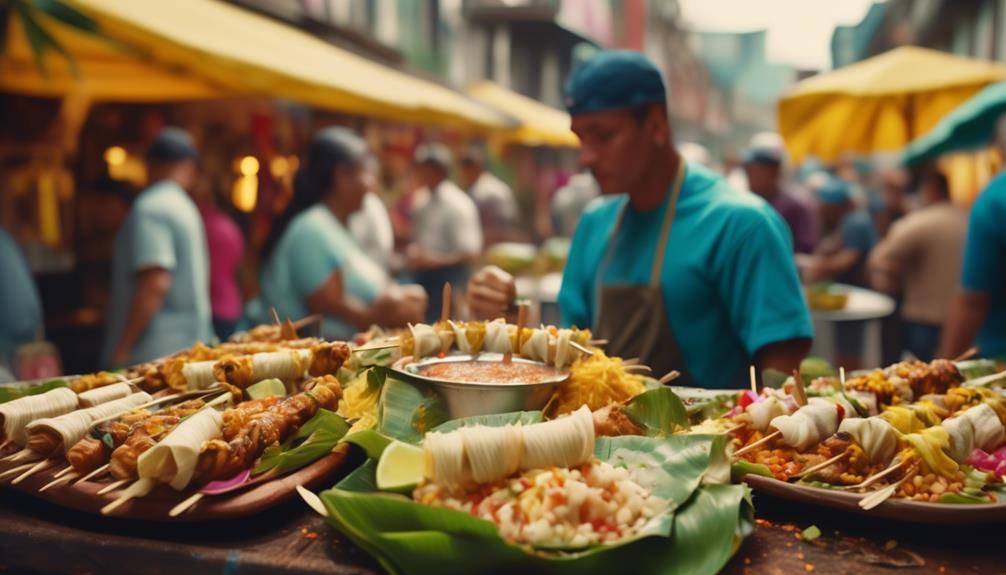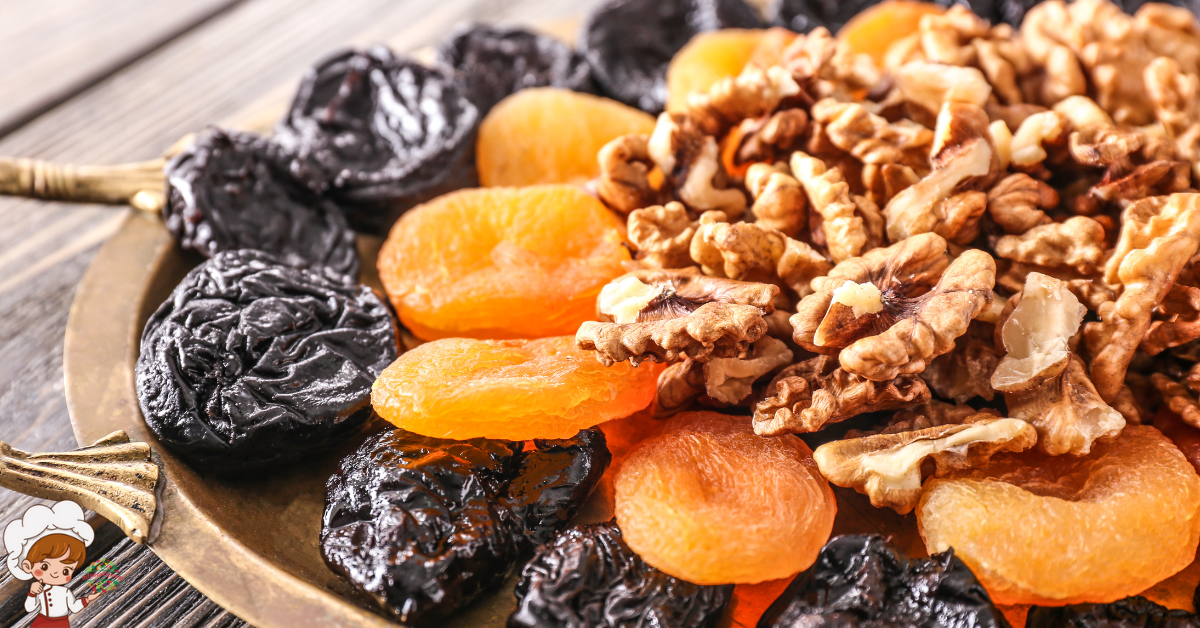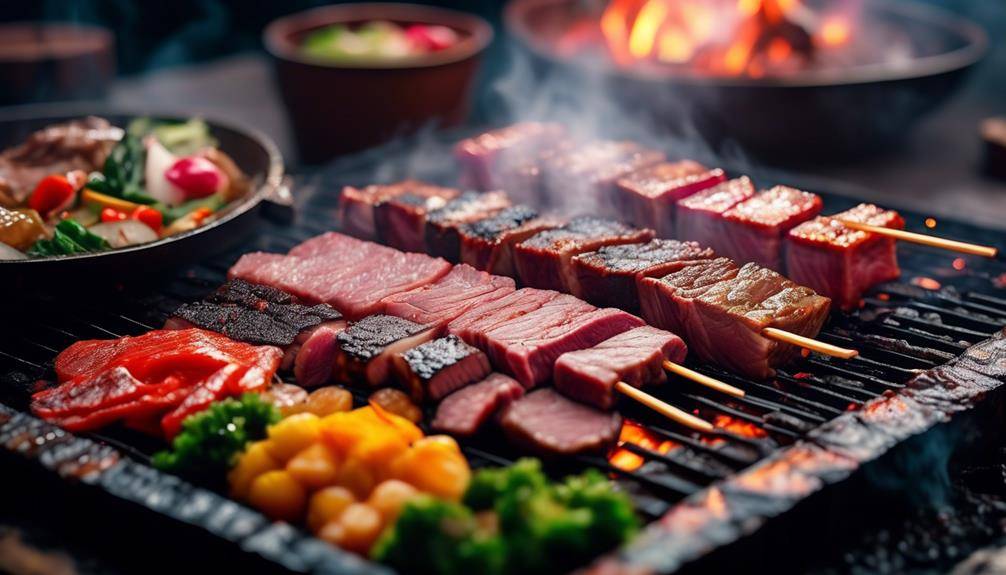Origin of The Best Scalloped Potatoes
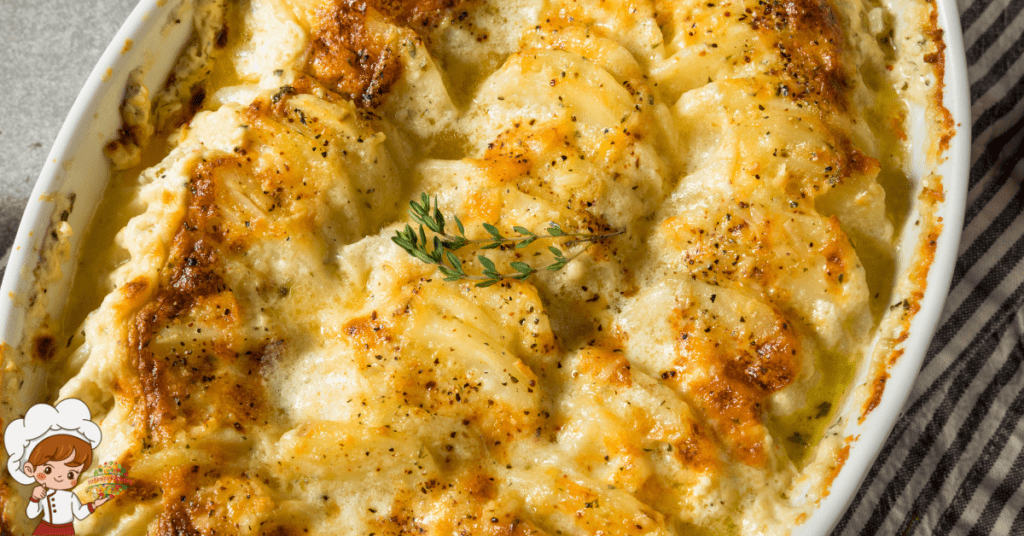
Origin of The Best Scalloped Potatoes; are more than just a creamy, baked side dish—they are a warm, nostalgic centerpiece in kitchens around the world. Whether served at holiday dinners, potlucks, or family meals, this dish continues to capture hearts and appetites. But where did scalloped potatoes come from? What makes them different from other popular potato dishes like au gratin potatoes? In this blog, we’ll explore the origin of scalloped potatoes, how the dish evolved over centuries, its cultural significance, and answer some of the most frequently asked questions about how to prepare, store, and serve it.
What Are Scalloped Potatoes?
Scalloped potatoes are traditionally made by layering thinly sliced potatoes in a baking dish and covering them with a creamy, seasoned milk or cream sauce, then baking until the top is golden and bubbling. Some modern versions add cheese, garlic, onions, or even ham, but the heart of the dish remains the same: potatoes, cream, and that unmistakable comfort-food texture. This classic potato casserole has roots in centuries-old European cuisine and remains a mainstay in American comfort food traditions.
The Origin of Scalloped Potatoes
The word “scalloped” likely derives from the Old English term collop, meaning “a slice,” which relates to the thin slicing of the potatoes in the dish. Some food historians also connect the term to the French word escalope, referring to thin slices of meat. These early linguistic roots support the central technique of scalloped potatoes: slicing the primary ingredient finely to ensure even cooking and flavor distribution.
In the 18th and 19th centuries, layered potato dishes became common in France and England, where root vegetables were a dietary staple. Baking sliced potatoes in milk or cream was a natural way to transform inexpensive ingredients into a warm, satisfying meal. These early dishes were often baked in scallop shells or other shallow dishes, which may have influenced the name as well.
As this preparation method spread across Europe, it took on regional variations. In French cuisine, a closely related dish known as gratin dauphinois appeared. Though often confused with scalloped potatoes, gratin dauphinois is generally richer and typically includes cheese and garlic. It is usually baked in cream alone without flour or roux. In contrast, traditional scalloped potatoes rely on a cream sauce thickened with a roux (a mixture of flour and fat).
Scalloped Potatoes in American Cuisine
Scalloped potatoes made their way to the United States with European immigrants and quickly became a fixture in home cooking. The dish adapted easily to the American pantry, especially in agricultural regions where potatoes, milk, and butter were always on hand. It was affordable, easy to prepare, and could feed large families with minimal effort.
By the early 20th century, scalloped potatoes had become a common feature in cookbooks and kitchen tables. The 1950s and 60s saw the rise of convenience cooking, which introduced new variations of the dish using canned soups, powdered sauces, and boxed mixes. Brands like Betty Crocker and Campbell’s popularized instant versions, helping scalloped potatoes become a regular appearance in American homes, particularly during holiday seasons.
Today, you’ll find scalloped potatoes on the menu for Thanksgiving, Easter, Christmas, and Sunday family dinners. Modern interpretations now include vegan versions, gluten-free options, and gourmet renditions made with exotic cheeses, truffle oil, and herbs.
Regional Variations and Global Reach
While scalloped potatoes are most often associated with North American comfort food, similar dishes exist globally. In Canada, the term “potato scallop” refers to a slightly different fried dish, though “scalloped potatoes” are still widely understood as the baked casserole. In Australia and New Zealand, the term “potato scallops” may refer to battered and deep-fried potato slices sold in fish and chip shops, not the baked variety.
Nevertheless, the casserole-style scalloped potatoes continue to be loved across the globe. Whether they’re called potato bake, gratin, or scalloped, the universal appeal of sliced potatoes cooked in cream remains undiminished.
Scalloped Potatoes vs. Potatoes Au Gratin: What’s the Difference?
One of the most common questions people ask is how scalloped potatoes differ from au gratin potatoes. While both dishes involve thinly sliced potatoes and a creamy cooking method, the key distinction lies in the ingredients and preparation.
Traditional scalloped potatoes are made with a cream or milk-based sauce that is thickened with flour or roux. Cheese is not required but may be added in modern recipes. Potatoes au gratin, on the other hand, always includes cheese throughout the layers, and the top is often sprinkled with cheese and breadcrumbs for a crispy finish. The term “au gratin” comes from the French culinary tradition of baking dishes with a browned crust, often made from cheese or breadcrumbs.
Because cheese has become such a common addition to scalloped potatoes in recent decades, many recipes blur the lines between the two. Nonetheless, the historical difference is that scalloped potatoes focus on creaminess, while au gratin emphasizes cheesiness.
The Cultural Significance of Scalloped Potatoes
Part of what makes scalloped potatoes such a popular dish is their deep cultural resonance. They evoke family gatherings, festive meals, and warm memories. The dish’s simplicity makes it accessible, while its richness elevates it to something special.
In many homes, scalloped potatoes are part of a holiday tradition, passed down through generations. They are often paired with ham, roast chicken, or turkey, and have become a must-have side dish for major celebrations. Yet the dish remains versatile enough for everyday dinners, especially when leftovers are abundant.
Restaurants have also embraced scalloped potatoes, often adding their own gourmet spin. High-end versions might include Gruyère cheese, caramelized onions, or infused oils. Vegetarian and vegan adaptations have further expanded the dish’s popularity, offering comfort food for a wide range of dietary lifestyles.
Frequently Asked Questions About Origin of The Best Scalloped Potatoes
What is the best type of potato to use for scalloped potatoes?
For the creamiest texture and best flavor, starchy potatoes like Russet potatoes or Yukon Gold potatoes are ideal. Russets break down slightly as they bake, helping to create a softer, more cohesive dish. Yukon Golds hold their shape better and have a naturally buttery flavor, making them a good choice for a more structured casserole.
Can you make scalloped potatoes ahead of time?
Absolutely. Scalloped potatoes are a perfect make-ahead dish. You can prepare them up to two days in advance by assembling the layers, covering the dish with foil, and refrigerating it. When ready to serve, bake the dish and adjust the time to ensure it’s heated all the way through. Alternatively, you can pre-bake the potatoes, refrigerate, and then reheat before serving.
Why are my scalloped potatoes undercooked?
Undercooked scalloped potatoes are often the result of thick slices or a short baking time. Be sure to slice the potatoes evenly and thinly, around 1/8 inch, using a mandoline if possible. Covering the dish with foil during the first part of baking helps trap moisture and ensures even cooking.
How do I keep the sauce from curdling?
To avoid curdling, use whole milk or heavy cream and cook the dish at a moderate oven temperature. Preheat the dairy before combining it with the roux and avoid high heat, which can cause separation. A roux also helps to stabilize the sauce and keep it smooth.
Can I freeze scalloped potatoes?
While you can freeze scalloped potatoes, the texture of both the potatoes and the sauce may change upon thawing. If freezing, it’s best to do so before baking. Assemble the dish, wrap it tightly in foil or plastic wrap, and store it in the freezer. Thaw in the refrigerator before baking as usual.
Are there dairy-free or vegan versions of scalloped potatoes?
Yes, and they’re delicious. Plant-based alternatives such as almond milk, oat milk, or cashew cream can be used in place of dairy. Vegan butter and cheese provide richness, and nutritional yeast adds a cheesy flavor. Many vegan scalloped potato recipes are also gluten-free, making them suitable for a variety of dietary needs.
Do scalloped potatoes need cheese?
Not in traditional recipes. Scalloped potatoes are defined by their creamy white sauce rather than by the presence of cheese. However, many modern recipes include cheese either between the layers or sprinkled on top, making the dish more closely resemble au gratin potatoes. Whether or not to add cheese comes down to personal preference.
Can I add meat to scalloped potatoes?
Yes. Adding ham, bacon, or sausage can transform scalloped potatoes from a side dish into a hearty main course. The saltiness of the meat complements the creaminess of the potatoes and makes the dish even more filling. This version is especially popular in casseroles and brunch dishes.
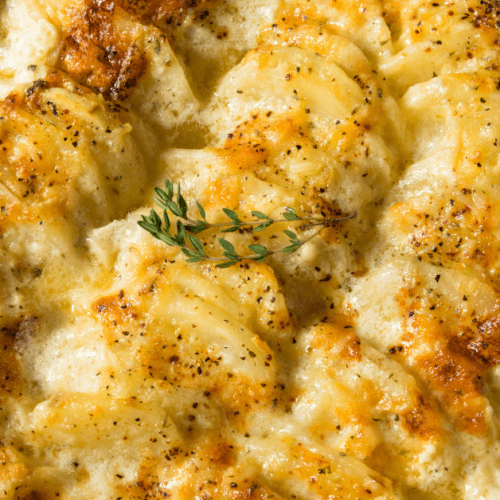
Classic Scalloped Potatoes Recipe
Ingredients
- 2 ½ pounds Russet potatoes or Yukon Gold potatoes peeled and thinly sliced (about 1/8 inch)
- 2 tablespoons unsalted butter
- 2 tablespoons all-purpose flour
- 2 cups whole milk or half-and-half for a richer texture
- 1 cup heavy cream
- 1 teaspoon kosher salt
- ½ teaspoon black pepper
- ½ teaspoon garlic powder optional
- ¼ teaspoon ground nutmeg optional for added warmth
- 1 small onion thinly sliced (optional, for flavor depth)
- 1 cup shredded cheddar or Gruyère cheese optional, for a cheesy variation
- Fresh parsley or thyme chopped (optional garnish)
Instructions
- Step 1: Preheat and Prepare
- Preheat your oven to 375°F (190°C). Lightly grease a 9×13-inch baking dish with butter or nonstick spray.
- Step 2: Make the Cream Sauce
- In a medium saucepan over medium heat, melt the butter. Whisk in the flour to create a roux, stirring constantly for about 1–2 minutes until smooth and lightly golden (do not brown). Slowly whisk in the milk and cream, stirring until no lumps remain. Add salt, pepper, garlic powder, and nutmeg if using. Simmer for 3–4 minutes until the sauce thickens slightly. Remove from heat.
- Step 3: Layer the Potatoes
- Spread a thin layer of cream sauce on the bottom of your prepared baking dish. Arrange half of the sliced potatoes in an even layer. Top with half of the onions if using, and pour over half of the cream sauce. If using cheese, sprinkle ½ cup over this layer. Repeat the process with the remaining potatoes, onions, sauce, and cheese (if using).
- Step 4: Bake the Dish
- Cover the dish tightly with foil and bake for 45 minutes. Then remove the foil and bake uncovered for another 25–30 minutes, or until the top is golden and bubbly and the potatoes are fork-tender.
- Step 5: Rest and Serve
- Let the scalloped potatoes rest for 10–15 minutes before serving. This allows the sauce to thicken further and the layers to settle. Garnish with chopped parsley or thyme, if desired.
Final Thoughts on Scalloped Potatoes
Scalloped potatoes are a timeless classic with a rich history and universal appeal. From their humble beginnings in European kitchens to their place on modern holiday tables, these creamy baked potatoes continue to comfort and satisfy. They have stood the test of time thanks to their adaptability, affordability, and irresistible flavor.
Whether you enjoy a traditional version with a simple cream sauce or a modern take loaded with cheese and herbs, scalloped potatoes remain a dish that brings people together. For home cooks, food historians, and comfort food lovers alike, understanding the origin of scalloped potatoes adds a new layer of appreciation to this beloved recipe.



